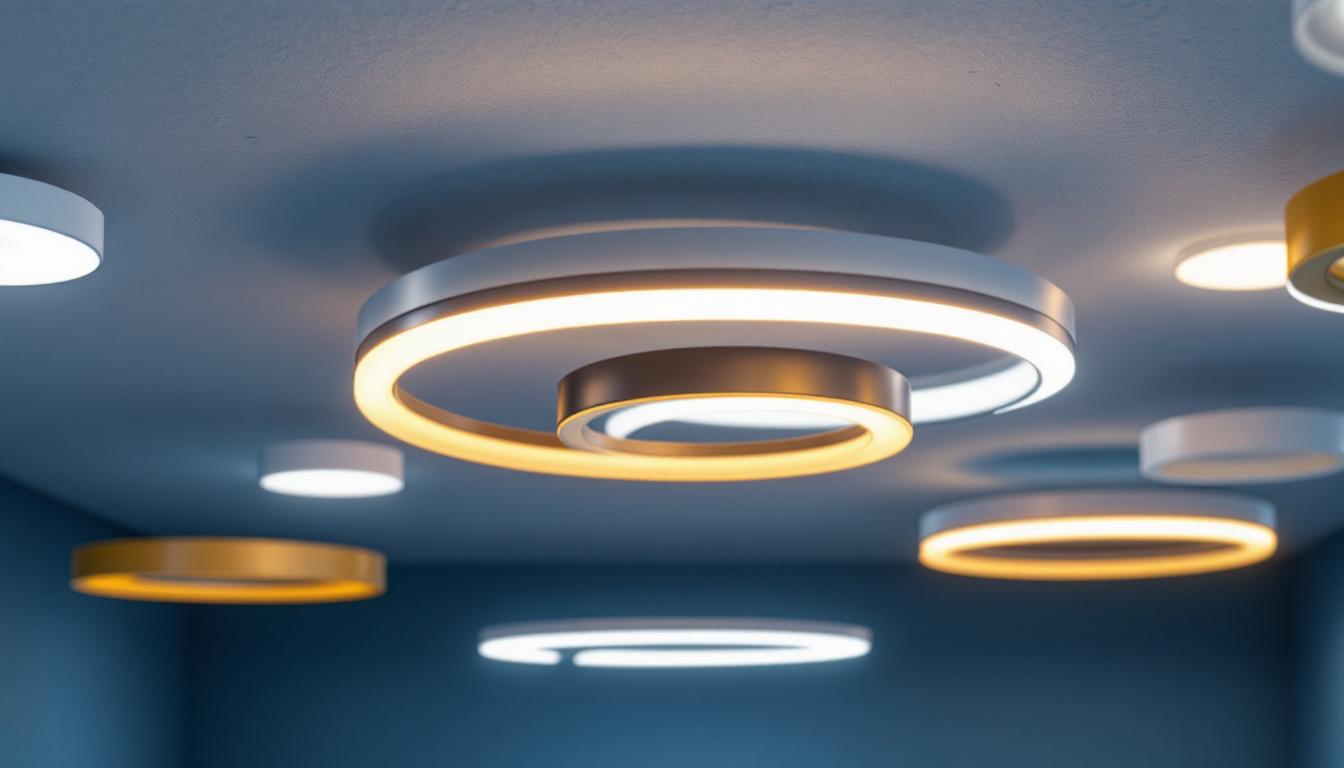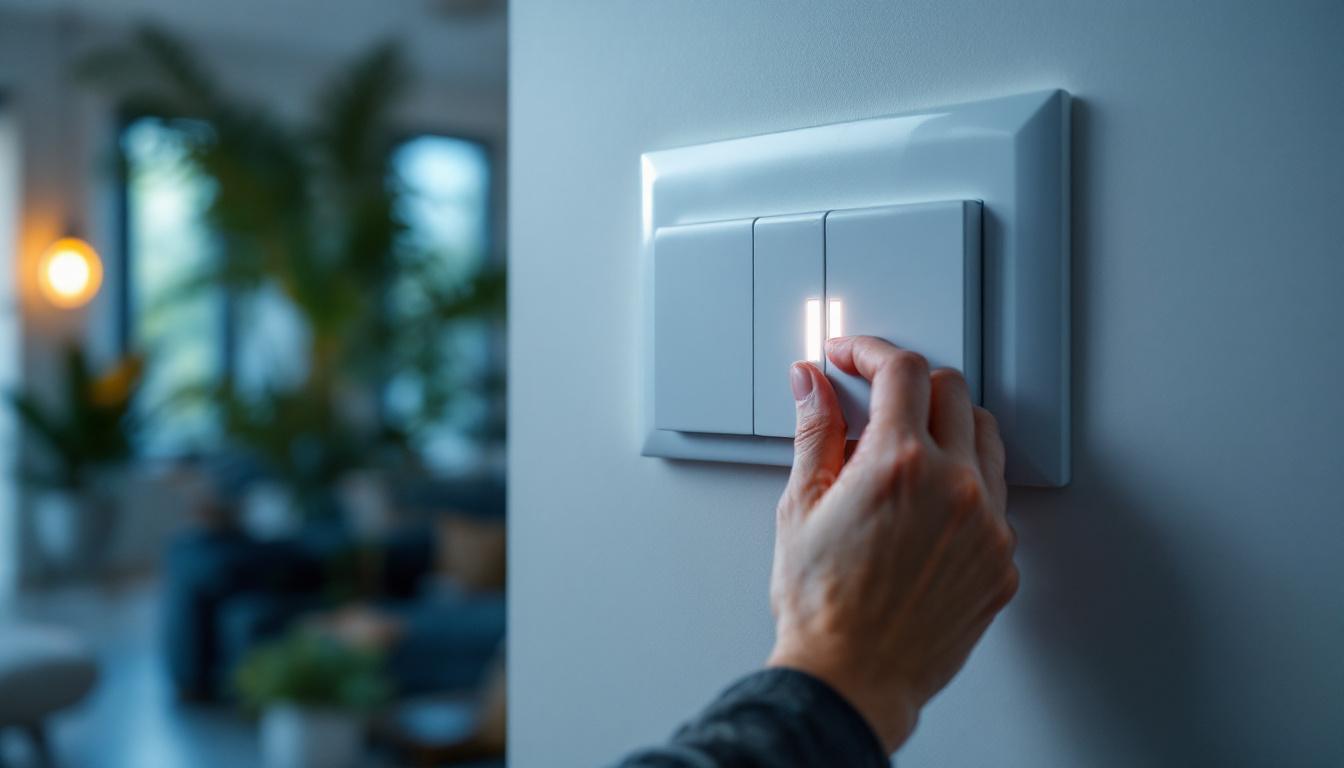
In the world of lighting design, ceiling light trim rings play a crucial yet often overlooked role. These components not only enhance the aesthetic appeal of a space but also contribute to the overall functionality of lighting fixtures. For lighting contractors, understanding the various types, materials, and installation techniques of trim rings is essential for delivering quality workmanship and meeting client expectations.
This article delves into everything lighting contractors should know about ceiling light trim rings, from their purpose and types to installation tips and maintenance considerations. By gaining a comprehensive understanding of these components, contractors can elevate their projects and ensure customer satisfaction.
Ceiling light trim rings come in a variety of styles and finishes, allowing contractors to match them seamlessly with the interior design of a room. From sleek, modern designs that feature minimalist lines to ornate, decorative options that add a touch of elegance, the choice of trim ring can significantly influence the overall ambiance. Additionally, the material of the trim ring—whether it be metal, plastic, or even wood—can affect both durability and appearance. Understanding these nuances helps contractors not only to select the right trim rings but also to advise clients on the best options for their specific needs and preferences.
Moreover, the installation of ceiling light trim rings is not merely a matter of aesthetics; it also involves ensuring proper fit and functionality. A well-installed trim ring can help to prevent dust and debris from entering the fixture, which can prolong the life of the light bulb and enhance safety. Contractors should be familiar with various installation methods, including the use of clips, screws, or adhesive, depending on the type of fixture and trim ring being used. Furthermore, regular maintenance of these components is vital; periodic cleaning and inspections can help maintain their appearance and function, ensuring that clients enjoy their lighting solutions for years to come.
Trim rings serve multiple functions in lighting installations. They are not merely decorative elements; they also play a significant role in the performance and safety of lighting fixtures. Here are some key purposes of trim rings:
One of the primary functions of trim rings is to enhance the visual appeal of a lighting fixture. Available in various styles, colors, and finishes, trim rings can complement the overall design of a room. Whether a project calls for a modern, sleek look or a more traditional vibe, the right trim ring can make a substantial difference. For instance, a polished chrome trim ring can add a touch of elegance to contemporary spaces, while a vintage bronze finish can evoke a sense of warmth and nostalgia in rustic settings. The choice of trim ring can thus be instrumental in achieving a cohesive design aesthetic that resonates with the intended ambiance of the room.
Trim rings are essential for concealing any gaps between the light fixture and the ceiling. This not only improves the overall appearance of the installation but also prevents dust and debris from accumulating in the crevices. A well-fitted trim ring creates a seamless transition between the fixture and the ceiling, contributing to a polished look. Additionally, by minimizing these gaps, trim rings can help reduce the potential for air leaks, which can be particularly beneficial in energy-efficient designs. This aspect is especially important in modern construction where energy conservation is a priority, as it helps maintain the integrity of the building’s insulation and overall energy efficiency.
In some cases, trim rings can also influence how light is distributed in a space. Certain designs can help direct light more effectively, enhancing the functionality of the fixture. By choosing the appropriate trim ring, contractors can optimize the lighting experience for their clients, ensuring that spaces are well-lit and inviting. For example, trim rings with reflective surfaces can amplify brightness and create a more expansive feel in smaller rooms, while those with diffusing properties can soften harsh lighting, making environments more comfortable. This versatility allows designers to tailor lighting solutions to meet specific needs, whether for residential settings or commercial applications.
Beyond aesthetics and functionality, trim rings also play a crucial role in the safety of lighting installations. They can help secure the fixture in place, ensuring that it remains stable and reducing the risk of accidents caused by loose or improperly installed lights. Furthermore, certain trim ring designs are engineered to accommodate heat dissipation, which is vital for preventing overheating in recessed lighting fixtures. By allowing for proper airflow around the fixture, these trim rings help maintain optimal operating temperatures, thereby extending the lifespan of the lighting components and enhancing overall safety.
Another significant advantage of trim rings is their contribution to the ease of maintenance. Many trim rings are designed to be easily removable, allowing for quick access to the light bulb or fixture for replacement and cleaning. This feature is particularly beneficial in high-ceiling installations where changing bulbs can be a cumbersome task. By simplifying maintenance, trim rings not only save time but also encourage regular upkeep, which is essential for maintaining the quality and efficiency of lighting systems over time. This thoughtful design consideration can lead to long-term satisfaction for homeowners and businesses alike, as they can keep their lighting fixtures in optimal condition with minimal effort.
Lighting contractors should be familiar with the various types of ceiling light trim rings available on the market. Each type offers unique features and benefits, making it essential to choose the right one for each project. Here are some common types:
Recessed trim rings are designed for use with recessed lighting fixtures. These rings provide a finished look while also helping to control light distribution. They come in various styles, including baffle, reflector, and adjustable trims, allowing contractors to select the best option based on the desired lighting effect.
Surface-mounted trim rings are typically used with flush mount or pendant fixtures. These rings are designed to sit flush against the ceiling, providing a clean and contemporary appearance. They are available in a range of materials, such as metal, plastic, and glass, allowing for versatility in design.
For projects that require a touch of elegance, decorative trim rings can be an excellent choice. These rings often feature intricate designs and high-quality finishes, making them suitable for upscale residential or commercial spaces. They can significantly enhance the overall aesthetic of a lighting fixture, making them a popular choice among designers and contractors alike.
The material of a trim ring can impact both its durability and appearance. Understanding the different materials available can help contractors make informed decisions when selecting trim rings for their projects. Here are some common materials:
Metal trim rings are known for their durability and modern aesthetic. They are often made from materials such as aluminum, brass, or stainless steel. Metal rings can withstand wear and tear, making them ideal for high-traffic areas. Additionally, they can be finished in various ways, including polished, brushed, or painted, to match the design of the space.
Plastic trim rings are lightweight and cost-effective, making them a popular choice for budget-conscious projects. While they may not offer the same level of durability as metal options, they can still provide a clean and attractive finish. Plastic trim rings are available in various colors and styles, allowing for flexibility in design.
Glass trim rings can add a touch of sophistication to any lighting fixture. They are often used in decorative applications and can be found in various shapes and finishes. While glass rings may require more careful handling during installation, their aesthetic appeal can elevate the overall look of a space.
Proper installation of trim rings is essential for ensuring their functionality and appearance. Lighting contractors must be familiar with the best practices for installing these components to achieve optimal results. Here are some tips to consider:
Before installing a trim ring, it is crucial to prepare the ceiling surface. Ensure that the area is clean and free of dust or debris, as this can affect the adhesion and fit of the trim ring. If necessary, patch any holes or imperfections in the ceiling to create a smooth surface for installation.
Having the right tools on hand is essential for a successful installation. Depending on the type of trim ring, contractors may need a screwdriver, drill, or adhesive. Always refer to the manufacturer’s instructions for specific installation requirements, as different trim rings may have unique needs.
When securing the trim ring, ensure that it is properly aligned with the light fixture and the ceiling. Use the appropriate fasteners or adhesive to hold the trim ring in place. It is essential to apply even pressure to avoid gaps or misalignment, which can detract from the overall appearance of the installation.
To ensure the longevity and performance of ceiling light trim rings, regular maintenance is necessary. Lighting contractors should educate their clients on the best practices for maintaining these components. Here are some key maintenance tips:
Keeping trim rings clean is essential for maintaining their appearance and functionality. For metal and plastic trim rings, a damp cloth and mild detergent can be used to remove dust and grime. Glass trim rings may require a glass cleaner to achieve a streak-free shine. It is important to avoid abrasive cleaners that could scratch or damage the surface of the trim ring.
Regular inspections of trim rings can help identify any signs of wear or damage. Look for cracks, chips, or discoloration, as these issues can affect both the aesthetic and functional aspects of the lighting fixture. If damage is detected, it may be necessary to replace the trim ring to maintain the integrity of the installation.
As design trends evolve, clients may wish to update their trim rings to reflect current styles. Lighting contractors should be prepared to offer suggestions for modernizing the look of a space through the selection of new trim rings. This can be an excellent opportunity to enhance the overall lighting design and improve client satisfaction.
Ceiling light trim rings are an integral part of any lighting installation, offering both functional and aesthetic benefits. For lighting contractors, understanding the various types, materials, and installation techniques of trim rings is essential for delivering high-quality work. By staying informed about the latest trends and best practices, contractors can ensure that their projects meet the expectations of clients while also enhancing the overall lighting experience.
As the demand for innovative lighting solutions continues to grow, so too does the importance of trim rings in achieving the desired results. By prioritizing quality and attention to detail, lighting contractors can elevate their projects and contribute to the creation of beautiful, well-lit spaces.
Ready to enhance your lighting installations with the highest quality ceiling light trim rings? Look no further than LumenWholesale. Our extensive selection of spec-grade lighting products is designed to meet the needs of the most discerning contractors. With unbeatable wholesale prices and the convenience of free shipping on bulk orders, you can equip your projects with top-notch lighting solutions that combine quality, affordability, and convenience. Don’t let inflated markups limit your potential. Visit LumenWholesale today and discover the best value in wholesale lighting for your next project.

Discover how electronic dimmer switches can revolutionize your lighting projects.

Discover why purchasing emergency ballast in bulk from local distributors might not be the best choice.

Discover the evolution of the first invented light bulb and explore essential best practices for modern lighting contractors.

Discover how portable construction lights are revolutionizing the way lighting contractors approach their projects.